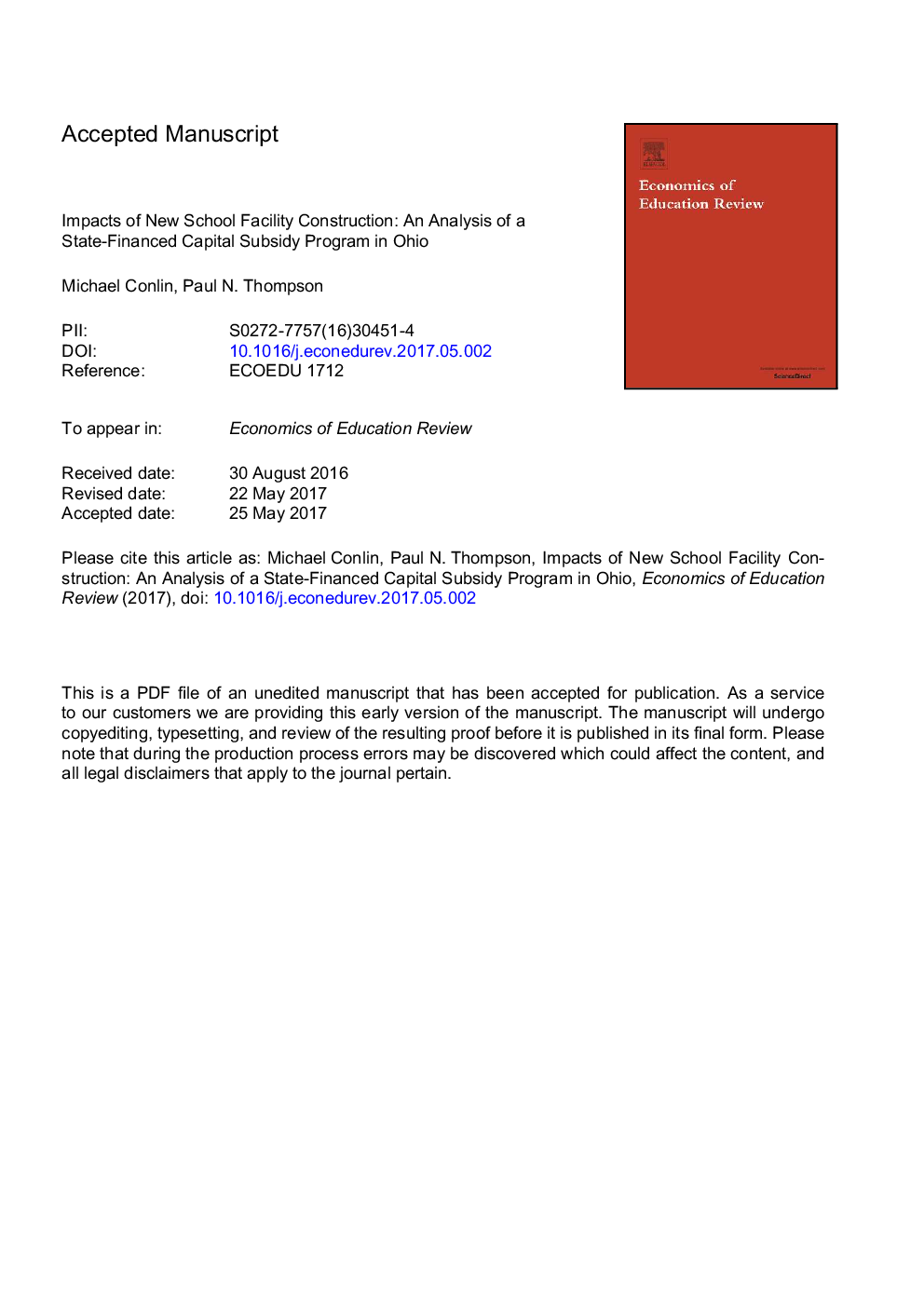| Article ID | Journal | Published Year | Pages | File Type |
|---|---|---|---|---|
| 4938298 | Economics of Education Review | 2017 | 36 Pages |
Abstract
This paper analyzes Ohio's capital subsidy program which distributed over $10B for school construction in 231 school districts between 1997 and 2011. Using an instrumental variables estimation, we find the percentage of students meeting test score proficiency thresholds decrease in math and reading in the first couple years after the capital expenditures and then increase in subsequent years. These results are consistent with short-term disruptions in student learning followed by long-term benefits from the capital expenditures. We also consider mechanisms by which capital expenditures affect achievement and find some evidence that changes in capital expenditures are correlated with changes in operating expenditures, suggesting that some of these effects may be attributable to operating expenditures. We find similar effects of these capital investments on the housing market. While in the short-term these construction projects decrease home prices, the housing market does benefit in the long-term from improvements to the capital stock.
Related Topics
Social Sciences and Humanities
Economics, Econometrics and Finance
Economics and Econometrics
Authors
Michael Conlin, Paul N. Thompson,
